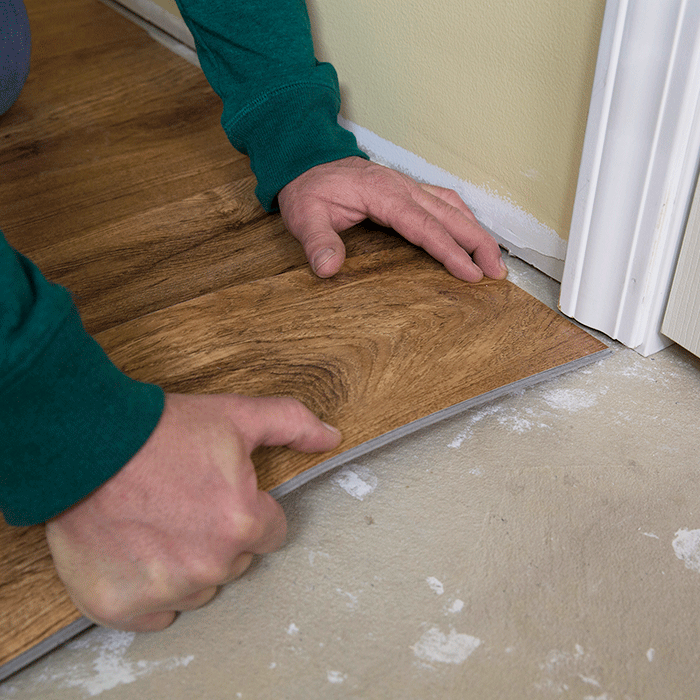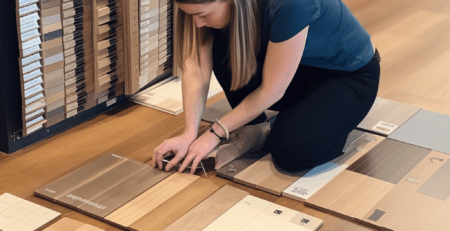CONCEALING FLOORING EXPANSION
Solid wood flooring will expand or contract with any changes in its moisture content. The main issue isn’t, as people tend to think, the floor pushing on the wall and buckling upward. That’s primarily an aesthetic problem and, in fact, upward buckling is a sort of relief mechanism. The real concern is that if a floor gets wet and expands, it can exert sufficient pressure to move walls outward and create a structural problem.
To address this concern, leave clearance between wood flooring and vertical obstructions such as walls. This clearance allows the last rows
Leaving clearance between wood flooring and vertical obstructions allows the last rows of flooring to expand with fluctuations in moisture content. Trim traditionally hides this gap, but with the thinner base molding com mon today, much of the gap is created by leaving the drywall higher than the flooring.
On a normally fastened wood floor, the clearance around the perimeter of the room has no effect on the boards in the center of the room. If the floor in the cen ter of the room gets wet and expands too much, it will buckle there. The expansion gap at the wall is there to allow the last rows of flooring to release from the sub-floor before pushing against the walls. The boards in the center of the room push against each other until the forces are so great that the boards pull the fasteners out of the subfloor and buckle upward.
of flooring to move enough to pull their fasteners out of the subfloor so that, if the floor grows enough in width to contact the walls, it will buckle upward instead of pushing on the walls. Trim traditionally hides this gap, but with the thinner base molding common today, much of the gap is created by leaving the drywall higher than the flooring.







